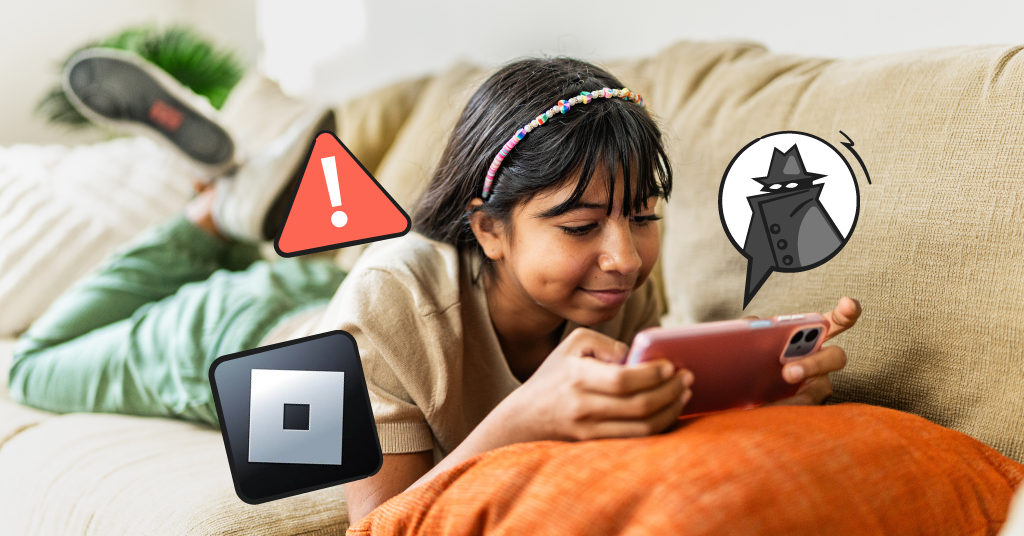
**Please note: This blog post was updated on April 6, 2023.**
Kids today are growing up in a dizzying world of technology. Even if they’re not accessing the internet on smartphones, tablets, and laptops at home, they’re likely using them at school. And although their devices can be powerful tools, they can also create problems.
A technology contract is a great way for your family to collaborate on rules for using devices and accessing the internet. It can help make sure the whole family is on the same page about how to get the most out of technology, and — most importantly — how to stay safer online. You can download Bark’s Technology Contract here.
Here are a few tips for using a technology contract with your family.
Consider a Technology Contract As Collateral for Your Child’s Device
As more and more kids have access to connected devices, the pressure for parents to provide kids with their own smartphones and tablets is heating up. But technology is a privilege, not a right. In most cases, parents are the owners of their kids’ devices, not the kids themselves. It’s OK to remind your kids that you’re loaning them the device in good faith, and you require them to sign a technology contract in exchange.
Set the Ground Rules
While the internet offers amazing possibilities, there are also many dangers that exist online. Here are a few points to consider.
- For younger kids, we recommend setting their password for any and all accounts they access and your child isn’t allowed to change them. If your child is older, you may want to consider letting them set their own passwords. With either approach, including a monitoring tool like Bark will provide an extra layer of safety to their online activity.
- It’s your right as the parent to look through the device at any point to see which sites they visit and who they’re communicating with online.
- Make sure your child knows to never video chat with strangers, and that they’re not allowed to provide any personal information on any forum or website without your permission. This includes their name, address, school, birthday, or any other information a stranger could use to find them.
- For teens with a driver’s license, make sure you have a strict no-texting-while-driving rule in place. This is not only the law in many states, but it can also be deadly. Check out AT&T’s It Can Wait campaign. It’s raising awareness of distracted driving and encouraging teens to put their phones down whenever they’re behind the wheel.
- Make it clear that there are consequences for breaking the terms of the technology contract. Consequences can include the loss of privileges associated with their device, losing access to the device for a set time period, or anything else that makes sense for your family.
- Remind your child that you’re a team that is in this together. Mistakes will happen, but you’re there to discuss it with them so you can learn and grow together.
Discuss Online Etiquette
In addition to setting safety rules for your child, it’s also critical to help them understand that there is basic etiquette for navigating the online world. For example, you could set rules about turning the device off in certain public places like restaurants or at the movies. Or consider a rule where the whole family puts their devices away during dinner or leaves their devices in the kitchen to charge overnight while sleeping.
Your child may know how to be a good person in real life, but the anonymity of the internet can sometimes blur the lines. It’s a good idea to clearly spell out that they should never lie to people online. Remind your child to be a good friend who never promotes or shares hurtful messaging, either. If your child is old enough to access social media sites, teach them the basics of privacy. And if you’re using Bark, explain that you’re monitoring their activity to ensure their safety, not to snoop.
Model the Behavior You Want Your Child to Emulate
Children watch what the adults in their lives are doing, so be mindful of how you use technology around them. For example, a “no smartphone at the dinner table” rule should include adults, too. Set a good example and interact with technology in the same manner you expect from your child.
The internet opens doors to amazing things for your child, and the conversation around responsibility, respect, and safety should be ongoing as technology continues to evolve. With a technology contract in place, everyone in the family can refer to it for clear expectations and actions.
Monitor Your Kid’s Activities
In addition to setting up a tech contract as a family and having regular conversations about internet safety, you can use Bark to monitor your child’s online activities. Even after talking about your family’s rules about the internet, your child might not always follow them. That’s why having an additional safeguard in place can be helpful.
Our award-winning monitoring service alerts parents and guardians when there’s a potential issue they need to know about — including cyberbullying, sexting, online predators, depression, suicidal thoughts, threats of violence, and more. Sign up today to monitor your child’s texts, email, YouTube, and 30+ apps and social media platforms and get one week of our service completely free!
Read more
Bark helps families manage and protect their children’s digital lives.





